We have much more to do and your continued support is needed now more than ever.
Celebrating a Milestone for Monarchs: 365 U.S. Cities Take the Mayors’ Monarch Pledge to Protect Our Pollinators!
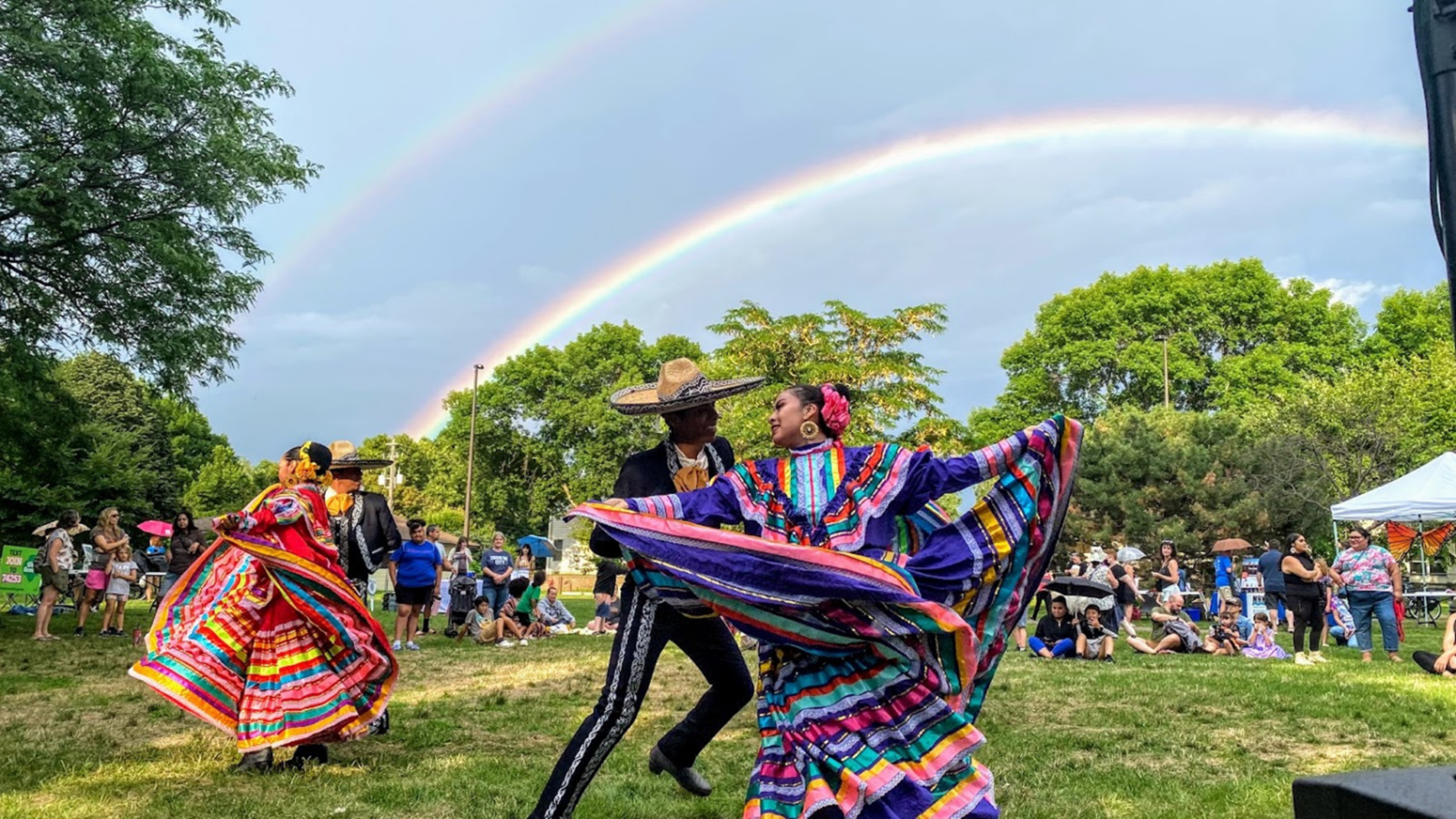
The Mayors’ Monarch Pledge was introduced in 2015 to provide a framework to engage communities across the U.S., Canada, and Mexico to address monarch butterfly decline and the pollinator crisis. The program encourages mayors and heads of local and Tribal governments to commit to actions that promote community engagement and education, enact local systems changes to support monarch conservation and create habitat for monarchs and other pollinators.
Due to the degradation and loss of summer breeding habitat in the U.S. and loss of winter habitat in south-central Mexico and coastal California, both eastern and western monarch populations have experienced significant declines. In 2014, the eastern monarch population dropped by almost 90%, and two years ago, we received the dire news that the western population dropped by 99%.
Major Cities Commit to Help Monarchs and Pollinators
In 2023, 365 heads of government signed the pledge, including mayors from six out of the 10 largest U.S. cities. These include Los Angeles, CA, Houston, TX, Phoenix, AZ, San Antonio, TX, San Diego, CA, and Dallas TX.
Los Angeles, CA, plans to complete five actions including initiating or supporting a community science effort that helps monitor monarch health and directing city property managers to consider the use of native milkweed and nectar plants.
Dallas, TX, aims to complete 13 actions such as adopting ordinances to reduce light pollution and creating a community-driven educational conservation strategy that focuses on and benefits local, underserved residents.
San Antonio, TX, the first city to ever earn the Monarch Champion designation, has committed to completing 24 actions including converting vacant lots to monarch habitat, hosting a native seed or plant sale, giveaway or swap, displaying educational signage at monarch gardens and more.
Overall, 144 communities plan to plant or maintain a demonstration garden,127 communities plan to host or support a native seed or plant sale, giveaway, or swap, 123 communities plan to issue a proclamation. 112 communities plan to launch or maintain a public communication effort, and 90 communities plan to add or maintain native milkweed and nectar-producing plants in community gardens.
Demonstration Gardens Educate Local Residents
Many communities who pledged this year also participated in last year’s program including the Town of Hempstead, NY. In 2022 the town planted several pollinator gardens to educate residents about monarch conservation and other related environmental issues.
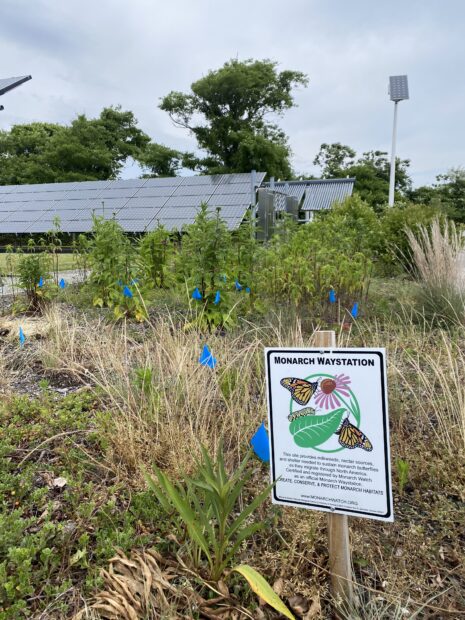
One of these gardens is located in the Clean Energy Park, which invites school, non-profit, scout, and environmental groups to learn about renewable energy, sustainable home design and native plants. The demonstration garden shows how planting natives that support monarchs and other pollinator species can serve as a way to make one’s home more sustainable.
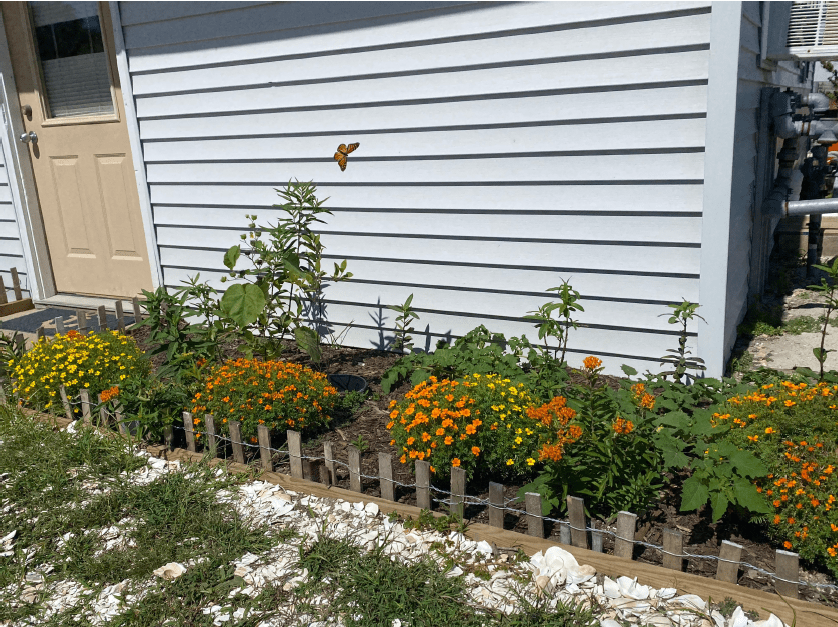
The Town’s Sustainable Shellfish Hatchery is also located within the park and features its own demonstration garden. This allows visitors to learn about pollinators and sustainable aquaculture practices simultaneously.
Raising Social Awareness through Gardens
Not only can gardens bring awareness to environmental issues, but they also bring awareness to social issues.
Throughout 2022, Urban Greenspaces, a volunteer group based in Thunder Bay, ON in Canada supported the maintenance of an Orange Flower Memorial project in their community. This initiative, led by the Alter Eden Minogin Gitigaanis Society, aims to bring awareness to the ongoing trauma that Indigenous Peoples face due to the residential school system and provide spaces for healing.
This particular garden, located at St. Joseph’s Hospital, contains culturally significant plants, such as sweetgrass and sage. It is also registered as a Monarch Waystation.
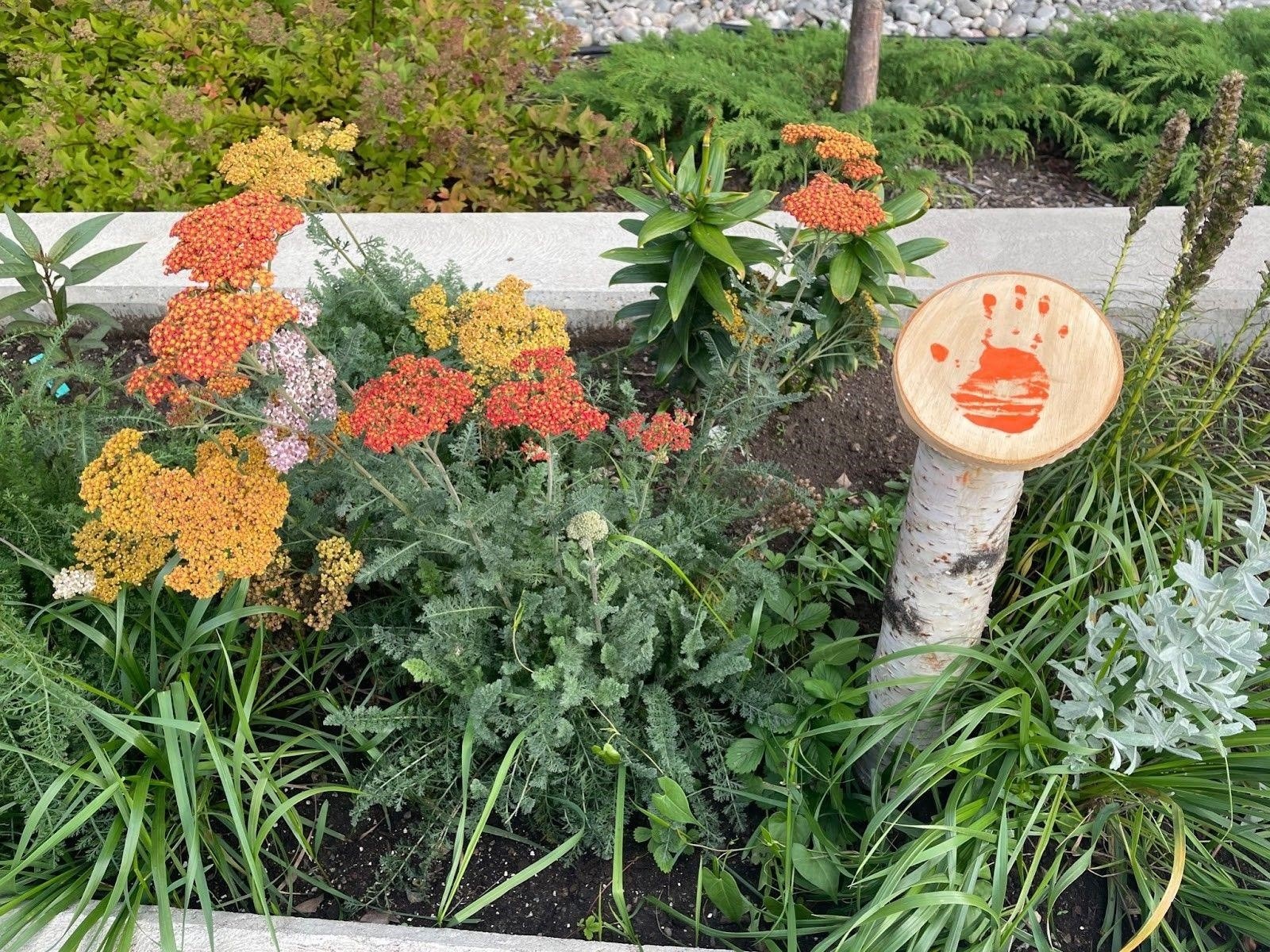
Connecting to Pollinators through Artwork
Many communities have also used art as a way to connect residents to pollinators and other wildlife. Last year, Seymour, IN collaborated with the Seymour High School Art Department to paint interactive murals at local parks. Most recently students painted a piece that includes flowers, bees, and turtles for visitors to take photos with. They also hope these murals inspire young people to be more conscious of local wildlife populations.

Art played a key role in the City of Flagstaff Arizona’s first pollinator week celebration in June 2022. As part of the celebration, the city hosted a pollinator-themed art contest.
Featured pieces were displayed at the public library along with an exhibit that provided information about local pollinators. Terra BIRDS, a local youth organization, also submitted a grant application to complete a community art project that will be implemented this spring.
This project will consist of several murals featuring different pollinators identified by their English common name, Latin name, and Indigenous name. Community members will have the opportunity to provide input on the murals and be involved in the painting process.
Art also serves as a way to make connections between the environment and important cultural traditions. The Fort Worth Botanic Garden Botanical Research Institute of Texas in Fort Worth, TX celebrated el Día de los Muertos last year by displaying monarch-themed art created by local artists and community members.
Monarchs play an important role in Mexican culture because the monarch migration to Mexico is said to represent the souls of loved ones returning for the Day of the Dead.
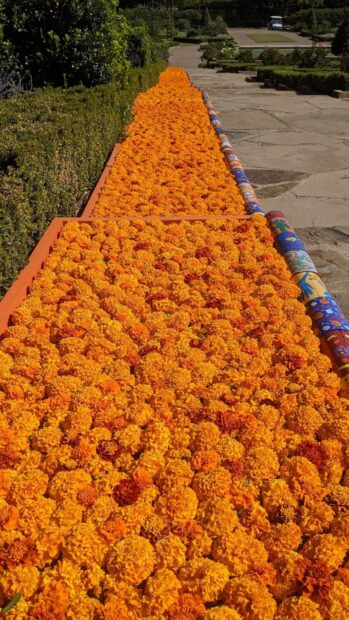
Botanic Garden Botanical Research Institute’s
Día de los Muertos celebration
Credit: Darcy Gustafson
Columbia Heights, MN also celebrated the cultural and natural diversity of their community by hosting a bilingual monarch festival. This event featured live music from a Mariachi group, Mexican Ballet Folklόrico, as well as an English and Spanish story time performance. It also included pollinator education booths and a monarch parade to teach residents about the important role that monarchs play in the local ecosystem. You can read more about this city’s efforts here.
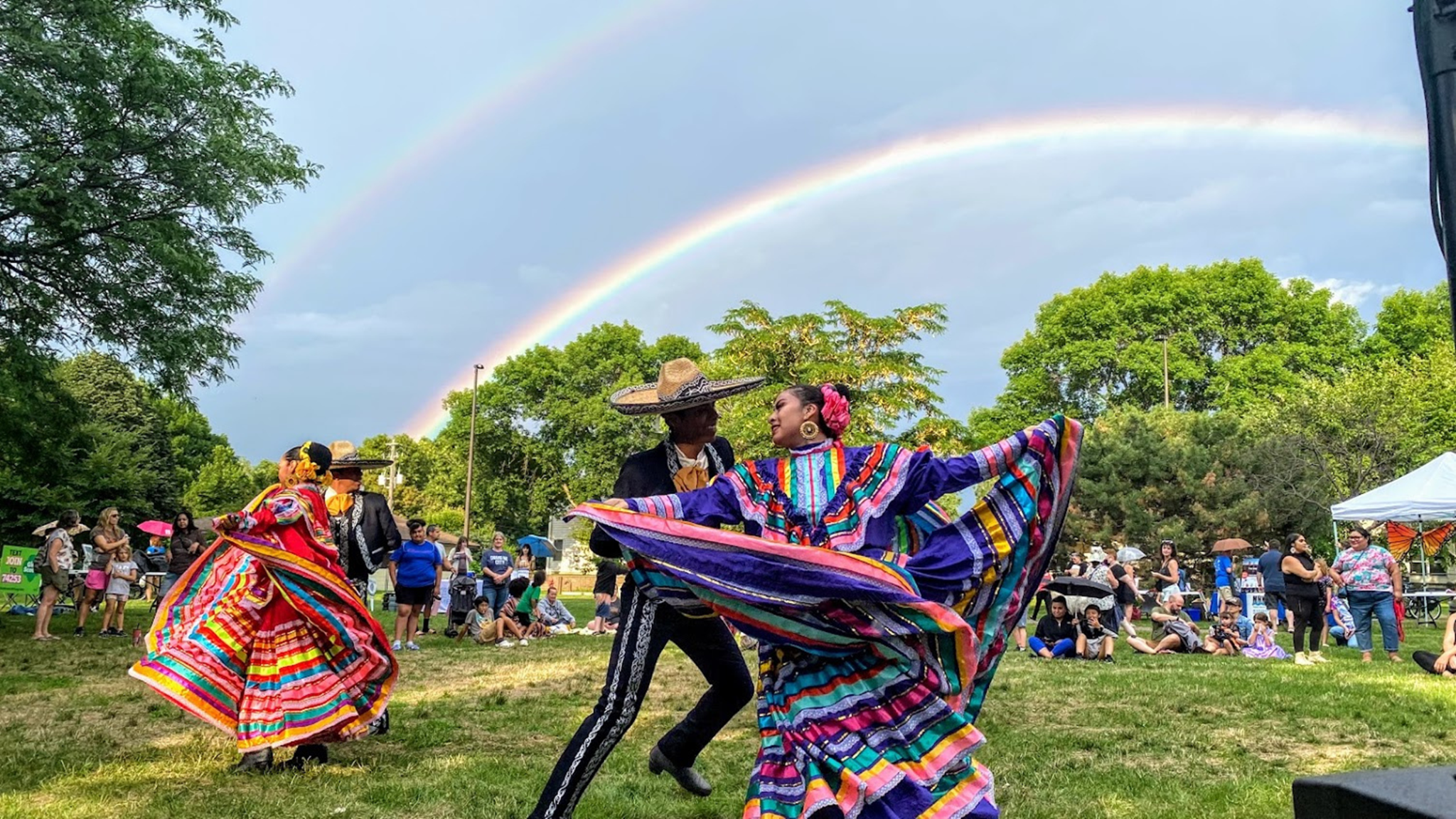
Building Community With the Mayors’ Monarch Pledge
While the mission of the Mayors’ Monarch Pledge program is to protect declining pollinator populations, many participants have used the program as an opportunity to build community around shared values of sustainability and celebrate the unique histories and cultures of their residents.
They also found innovative ways to make pollinator conservation accessible and ensure that all community members have opportunities to connect to their local environment. We are excited to see how this year’s participants will continue this work and make the program their own in 2023!
Read the Mayors’ Monarch Pledge 2022 impact report to learn more.





















